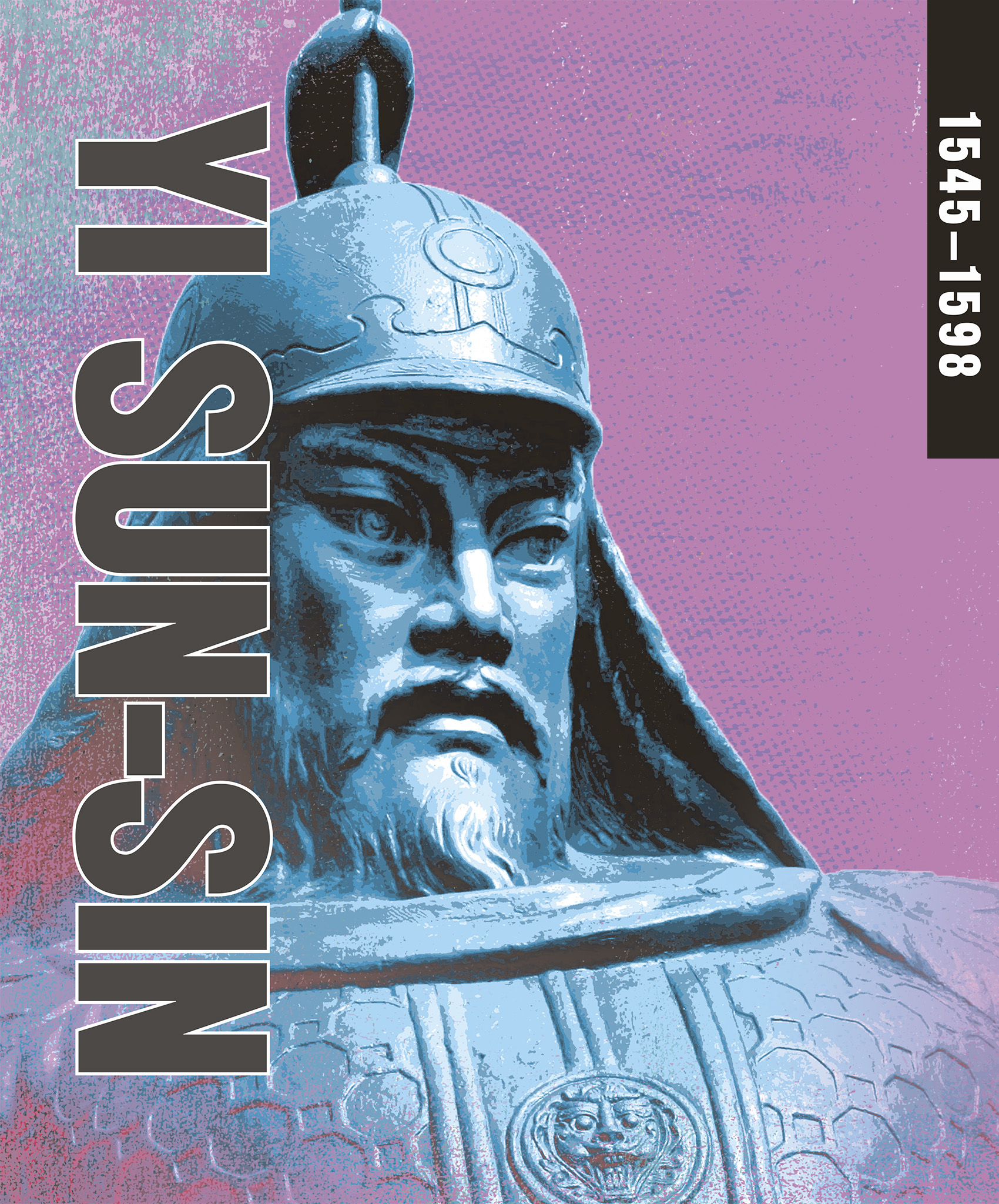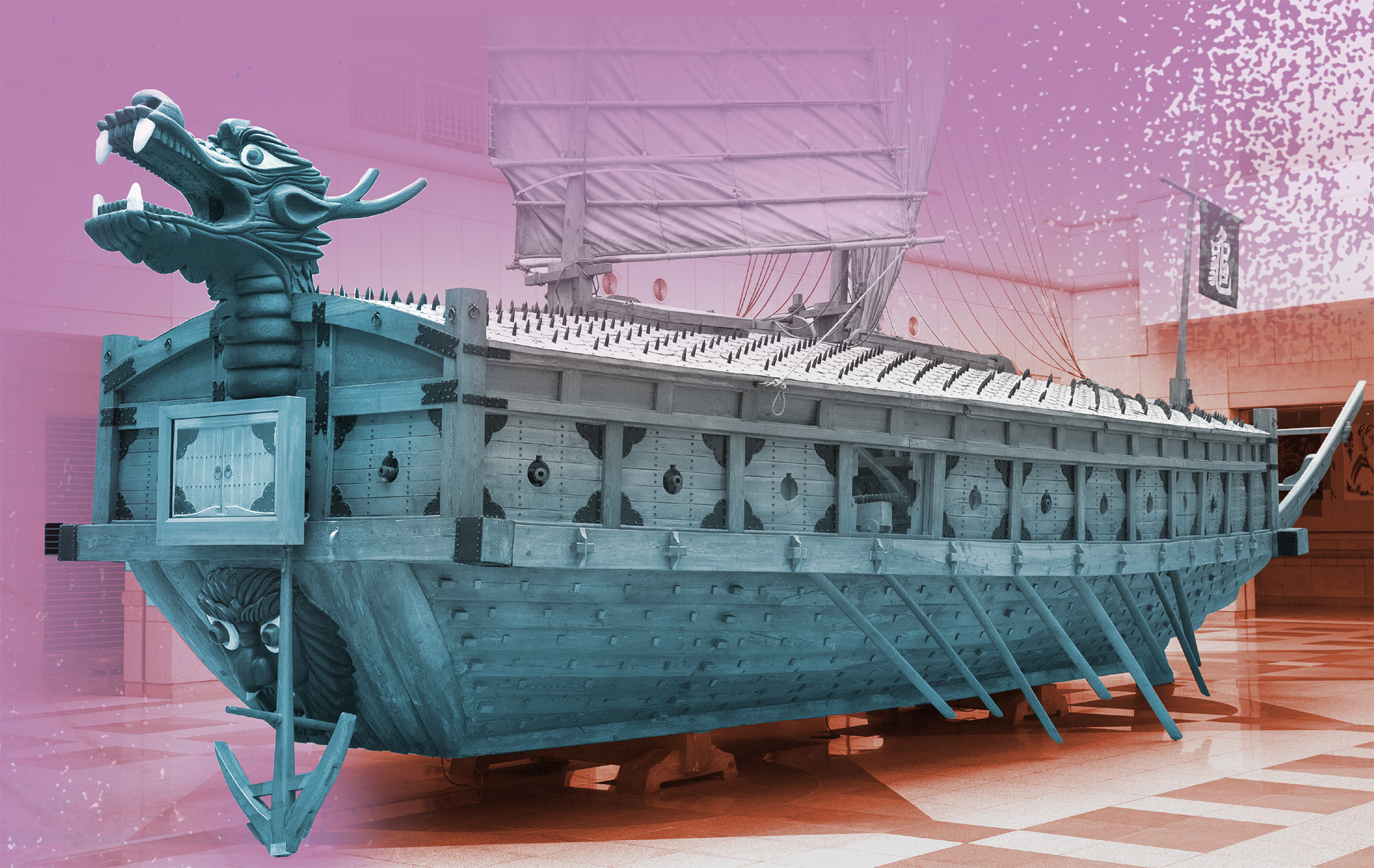
YI SUN-SIN
1545–1598
Admiral Yi Sun-sin was the hero of Korea’s resistance to Japanese invasions in the late 16th century. Seen as one of the best naval commanders in history, he continues to be revered by Korean people today.
Yi was born in Seoul on April 28, 1545 but grew up in the town of Asan. His family were aristocrats of the Deoksu Yi clan, who were out of favor with the Korean royal court. This may account for Yi’s initial slow progress in his military career; he did not achieve junior officer rank until he was 32.
Fighting attacks by Manchurian Jurchen horsemen, Yi distinguished himself with his intelligence and bravery but his lack of wealth or political influence meant he had little defense against the jealousy that was rife under the Korean monarchy. In the mid-1580s, he was falsely accused of desertion and reduced to the rank of a common soldier. However, his disgrace was brief—after holding a number of senior army positions, he was appointed to the command of a fleet in southwest Korea in 1591.
“Do not make a hasty movement. Be like a mountain. Move silently and cautiously.”
Yi Sun-sin, 1592
Naval commander
With Korea facing seaborne invasion by the Japanese, Yi analyzed the situation and made a tactical battle plan, despite having no prior naval training. Since the Japanese had more ships and soldiers than Korea, Yi predicted they would try to win by boarding and overpowering Korean vessels. Korea’s advantage over Japan lay in its ability to build cannons, so Yi ordered the construction of many panokseon (cannon-armed warships) for his fleet. He also developed an improved armored warship, the kobukson (“turtle ship”) that would be secure against Japanese attack.
In April 1592, the Japanese invaded at Busan on Korea’s south coast. Yi inflicted serious losses on the enemy ships. At the Battle of Sacheon in July, his panokseon proved a huge success. Yi was shot in the shoulder, but he survived, and a flotilla of Japanese ships was destroyed. Later that year, in the Battle of Hansan Island, Yi won a resounding victory over the Japanese, enveloping their fleet in a U-shaped “crane’s wing” formation and devastating it by cannon fire. Out of 73 enemy ships, only 14 escaped. The Japanese abandoned their invasion, and the Korean government gave Yi total command of its navy.

Yi updated the design of the 200-year-old kobukson (turtle ship), covering its deck with iron plates and spikes and placing a cannon that could fire through the dragon’s-head prow.
Final stand

However, gratitude did not last and enemies at King Seonjo’s court, including a Japanese spy, conspired to have Yi dismissed in 1597. He was arrested and tortured, then reduced again to the rank of a common soldier. Later that year, the Japanese invaded again, and in the ensuing battle Yi’s successor Admiral Won died. Most of Korea’s fleet was destroyed and the king had no choice but to recall Yi to command. Despite having only 13 warships, Yi defeated 133 Japanese ships in the Battle of Myeongnyang.
The Japanese invasion was forced to retreat; Yi routed them at the Battle of Noryang, 1598, but was shot and killed. Upon his orders, his death was hidden until the battle was over, to protect morale. Yi was not mourned at court, but his achievements were recognized later, with shrines built in his honor.
“The battle is at its height … Beat the war drums. Do not announce my death.”
Yi Sun-sin, 1598

Admiral Yi relied on his knowledge of local tide currents and lured the Japanese fleet into a trap during the Battle of Myeongnyang in 1597. The Japanese were first carried by strong tides into the firing line of his panokseon’s cannons and then swept away in disarray.
SEONJO OF JOSEON
Seonjo was the king of Korea during the Japanese invasions. Born in 1552, he succeeded to the throne at the age of 16.
The early years of his reign brought much-needed reforms. He is credited with reviving Confucian scholarship, fighting corruption, and improving the welfare of the people. Conservative advisors convinced him to reduce Korea’s military, which left Korea unprepared to resist the Japanese invasions. By the time the Japanese were defeated in 1598, his son, Crown Prince Gwanghaegun, was exercising power. Seonjo died in 1608.
MILESTONES
Falsely accused
Becomes a junior officer aged 32 but is demoted after false accusations of desertion.
commands fleet
Appointed commander of Left Jeolla Naval District in 1591, he strengthens his fleet.
defeats Japanese
Wins 15 battles against Japanese, 1592–94, ending their first invasion without losing a single Korean ship.
unlikely victory
Resumes command, 1597, and defeats Japanese at Battle of Myeongnyang with a fleet of only 13 ships.
final campaign
Finally defeats Japan, 1598, but is fatally wounded during battle.
